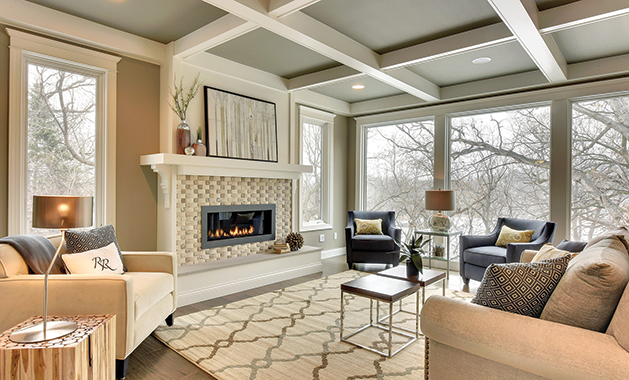
Warmer weather usually brings an increase in the real estate market. Flowers and “for sale” signs sprout everywhere. The key to selling your house is to get the right person to see it—and see themselves living in it. According to real estate agents Susan and Gary Wahman—partners who work with Edina Realty—there are some tried-and-true ways to help a potential buyer fall in love with your property. One thing they strongly recommend is staging. Staging a house typically means removing some of the more personal items like family photos and sentimental knick-knacks and trying to create a more neutral space.
“Staging helps sell a house because it attracts more buyers online,” Susan Wahman says. “When a house has been professionally staged, it is visually more appealing online and creates more showings. Once a buyer walks in the front door, they already have attached an emotion to the house, and even though they know they aren’t buying the furniture, they like the way it makes them feel.
They are ‘buying a lifestyle,’ not just a house.”
Gary Wahman agrees: “Professionally staged homes can make rooms look larger, can make them flow better and appeal to today’s buyers. Depersonalizing a home allows buyers to see themselves living there.”
Susan encourages sellers to hire a professional stager rather than trying to do the work themselves.
“Professionals specialize in knowing trends, they understand the scale of the furniture and they can execute a look that is cohesive and appealing to the target buyer,” Susan says.
She often uses Sharon Larkins from Register Redesign. Larkin thinks the cost of staging is a good investment.
“A well-staged house will always sell for more,” Larkins says. “No matter what price your home is listed for, staging will make your house sell faster and help you get multiple offers.”
Don Edam of Lakes Sotheby's International Realty offers similar advice to sellers and, like the Wahmans, he emphasizes the importance of how your house will look online.
“I tell clients that online appeal is the new curb appeal,” Edam says. “Their home will be viewed thousands of times online based on the pictures we have posted. We need to think about how those photos will be taken and what we may need to properly stage in that shot.”
The experts agree. When you’re selling a house, you’re also selling a home—or in Susan Wahman’s words “you’re selling a lifestyle.” Staging is a tool that helps buyers see your house as their home.
Expert DIY Staging Suggestions:
Take a photo of each room from the widest angle possible. Does it look cluttered? Does the room feel balanced? Is there good lighting? This will help you see how other people will be seeing your home. This can help with editing decisions objectively, not emotionally.
Make the house still feel like a home. Make sure to have a few accessories on tables, books on the bookshelves and fresh towels in the bathroom. A house that has been “stripped” too much often feels sad.
Think about what objections a buyer may have with your house. Make a list. Try to eliminate as many objections as possible. Is there worn carpet? Dated light fixtures? Buyers will remember what they need to change in the home, and will calculate an offer accordingly. The fewer objections, the quicker the house will sell.









